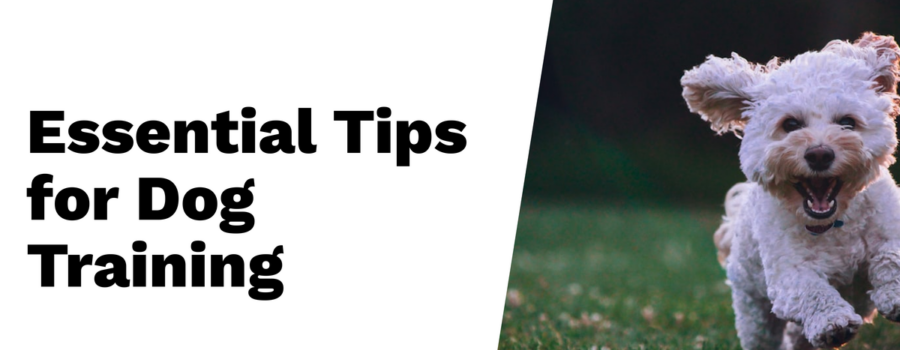Effective dog training is a rewarding journey that requires patience and understanding. Start your sessions without your dog to perfect the commands. Choose a peaceful environment free from distractions to help them focus better during training. Make sure your dog is comfortable by ensuring they’ve eaten and relieved themselves beforehand. Positive reinforcement works wonders, so reward them with treats or praise when they follow commands, keeping it varied to retain interest. It’s vital to be consistent in your commands and calm in demeanor, as dogs respond best when they feel secure. Remember to keep the sessions short for maximum engagement!
1. Start Without Your Dog
Before you even bring your dog into the training space, it’s beneficial to practice the commands and techniques on your own. This allows you to become familiar with the movements and the tone of voice you will use. For instance, if you plan to teach your dog to sit, practice the gesture of raising your hand and saying ‘sit’ without your dog present. This helps you become clear about what you want to convey and reduces the chances of confusion during actual training. Think of it as rehearsing for a play; the better prepared you are, the more smoothly everything will go when it’s showtime. This step also allows you to refine your approach, ensuring that your cues are consistent and effective when your dog is finally involved.
2. Choose a Calm Environment
When training your dog, it’s crucial to choose a calm environment. A quiet space helps minimize distractions, allowing your dog to focus better on learning new commands or behaviors. For instance, practicing in a busy park filled with people and other dogs might overwhelm your pet and make it difficult for them to concentrate. Instead, opt for a quiet room in your home or a secluded area in your backyard. You can also use this calm setting to gradually expose your dog to new noises or distractions while still maintaining a controlled environment. This method not only aids in learning but also builds confidence in your dog as they become accustomed to following commands in different situations.
3. Ensure Comfort Before Training
Before you start training your dog, it’s crucial to ensure they are comfortable. A well-fed dog is more focused, so make sure your dog has eaten before training sessions. Additionally, take them outside to relieve themselves. This minimizes the chances of distractions during training, allowing your dog to concentrate fully on learning. For instance, if your dog is hungry or needs to go out, they may become restless or disengaged, making it harder for them to grasp new commands. Keeping their comfort in mind sets a positive tone for your training sessions.
4. Use Positive Reinforcement Techniques
Using positive reinforcement is one of the most effective dog training methods. This technique involves rewarding your dog for exhibiting desired behaviors, making it clear to them what actions are appreciated. For instance, when your dog sits on command, immediately give them a treat or praise them with a cheerful voice. The key is to reward them right after the behavior occurs so they can connect the action with the reward.
To keep your dog interested, vary the rewards. Sometimes use treats, other times give them their favorite toy or praise them enthusiastically. This unpredictability helps maintain their excitement and motivation during training. Remember, dogs thrive on positive interactions, so the more you reward good behavior, the more likely your dog will repeat it.
It’s also important to be mindful of your timing. If your dog does something good, such as returning a toy, reward them instantly. This immediacy helps your dog understand exactly what they did right. Avoid punishing your dog, as it can lead to fear and confusion. Instead, focus on guiding them toward the correct behavior and rewarding them when they succeed.
- Offer treats to reward good behavior
- Use a cheerful voice to praise your dog
- Incorporate toys as rewards for successful training
- Gradually increase the difficulty of tasks as your dog improves
- Always reward immediately to reinforce the behavior
- Be clear about what behavior is being rewarded
- Stay patient; every dog learns at their own pace
5. Show, Don’t Force Your Dog
When training your dog, it’s essential to show them what you want rather than forcing them into a behavior. Dogs learn best when they can see and understand the action expected of them. For instance, if you want your dog to sit, instead of pushing their rear down, demonstrate the action yourself by sitting down or using a treat to guide them into position. This visual cue helps your dog connect the action with the command. Additionally, if you’re teaching them to roll over, you can gently guide them through the motion with a treat, allowing them to follow along rather than feeling pressured. By modeling the desired behaviors, you’re building a clearer line of communication and trust between you and your dog.
6. Be Consistent and Calm
Consistency is crucial in dog training. Use the same commands and gestures every time you communicate with your dog. For example, if you use “sit” to ask your dog to sit down, don’t switch to “down” or any other word later on. This helps your dog understand what you want without confusion.
Staying calm during training sessions is equally important. Dogs can pick up on your emotions, so if you’re frustrated or anxious, your dog may become stressed or uncooperative. Take deep breaths and maintain a relaxed demeanor. If your dog doesn’t respond to a command, instead of raising your voice or showing frustration, try to calmly repeat the command or show them what you mean. This approach creates a positive atmosphere, making it easier for your dog to learn.
7. Keep Training Sessions Short
Keeping training sessions short is crucial for effective dog training. Dogs, especially puppies, have limited attention spans, and lengthy sessions can lead to boredom or frustration. Aim for training sessions lasting between 5 to 10 minutes, focusing on one specific behavior at a time. For example, if you are teaching your dog to sit, dedicate the entire session to that command. After the training, end with a fun activity, like a short game of fetch or tug-of-war. This not only reinforces the training but also keeps your dog engaged and looking forward to future sessions.
8. Track Your Dog’s Progress
Tracking your dog’s progress is crucial for effective training. By documenting each session, you can see which commands your dog is mastering and which ones need more work. You might keep a simple notebook or use a training app to note down your dog’s responses, the time spent on each command, and any challenges faced. For example, if you notice your dog is consistently sitting on command but struggles with ‘stay’, you can focus more on that specific behavior in future sessions. Additionally, recording video can provide visual feedback, allowing you to assess your technique and adjust your approach if necessary. Observing improvements over time can also boost your motivation and reinforce the bond between you and your dog.
| Tip Number | Essential Tip | Key Details |
|---|---|---|
| 1 | Start Without Your Dog | Practice commands without your dog for clarity. |
| 2 | Choose a Calm Environment | Train in a distraction-free space. |
| 3 | Ensure Comfort | Ensure your dog is fed and relieved before training. |
| 4 | Use Positive Reinforcement | Reward with praise or treats for desired behavior. |
| 5 | Show, Don’t Force | Demonstrate behaviors instead of forcing them. |
| 6 | Be Consistent and Calm | Use consistent commands and maintain composure. |
| 7 | Keep Sessions Short | Limit sessions to 5-10 minutes. |
| 8 | Track Progress | Document sessions to monitor and adjust training. |
| 9 | Practice Patience | Be patient and simplify tasks if needed. |
| 10 | Make it Fun | Enjoy the process and take breaks if necessary. |
9. Practice Patience During Training
Patience is key when training your dog. Every dog learns at their own pace, and what might seem simple to you can be quite challenging for them. If your dog isn’t grasping a command, it’s important to remain calm and avoid frustration. For instance, if you’re teaching them to sit and they keep jumping up instead, take a moment to reassess. You might need to simplify the command or break it down into smaller steps. Instead of saying ‘sit’ right away, you can guide them into a sitting position with a treat. Praise them for any progress, even if it’s not perfect. Remember, training is a journey, and showing patience helps build trust between you and your dog.
10. Make Training Fun for Both
Training your dog should be an enjoyable experience for both of you. When training is fun, your dog is more likely to be engaged and eager to learn. Incorporate games, like fetch or hide-and-seek, into your sessions. For instance, after practicing commands, reward your dog with a short game of tug-of-war or let them chase a ball. This not only reinforces their training but also strengthens your bond. If you notice that either you or your dog is losing interest, take a break and try again later. Remember, a positive and enjoyable atmosphere promotes better learning!
Frequently Asked Questions
1. What is the best way to start training my dog?
Start with basic commands like sit, stay, and come. Use positive reinforcement, like treats or praise, to encourage your dog.
2. How long should each training session be?
Keep training sessions short, around 5 to 15 minutes. Dogs have short attention spans, so frequent short sessions work best.
3. What should I do if my dog doesn’t listen?
Stay patient and consistent. Try using more exciting rewards or change your training environment to reduce distractions.
4. Is it important to socialize my dog?
Yes, socializing helps your dog become well-adjusted and less fearful of new people or environments. Introduce your dog to various situations gradually.
5. Can I train my dog without using treats?
Absolutely! You can use toys, praise, or playtime as rewards. Find what motivates your dog the most.
For effective dog training, start by practicing commands without your dog in a calm, distraction-free environment. Ensure your dog is comfortable and use positive reinforcement like praise and treats. Demonstrate behaviors instead of forcing them, and maintain consistency in commands. Keep sessions short (5-10 minutes) and track progress. Stay patient and make the training fun for both you and your dog.




